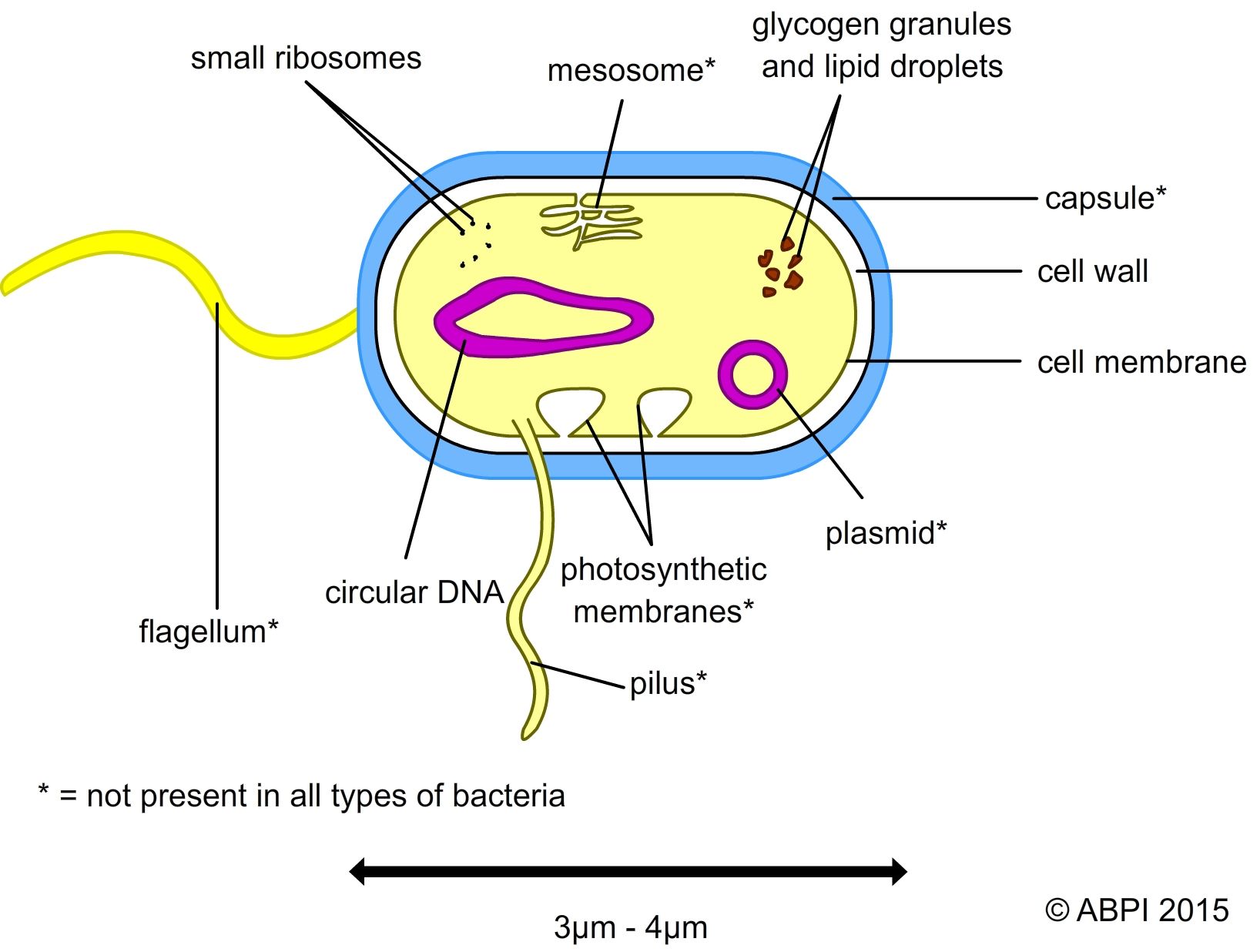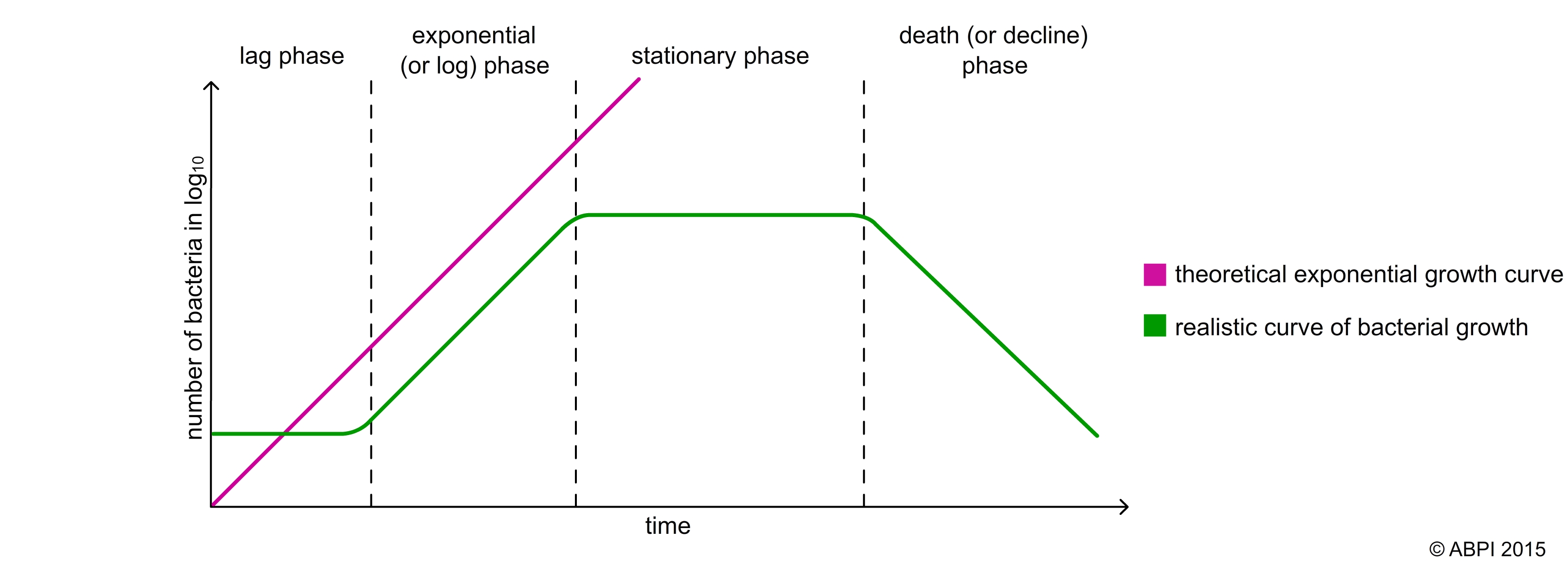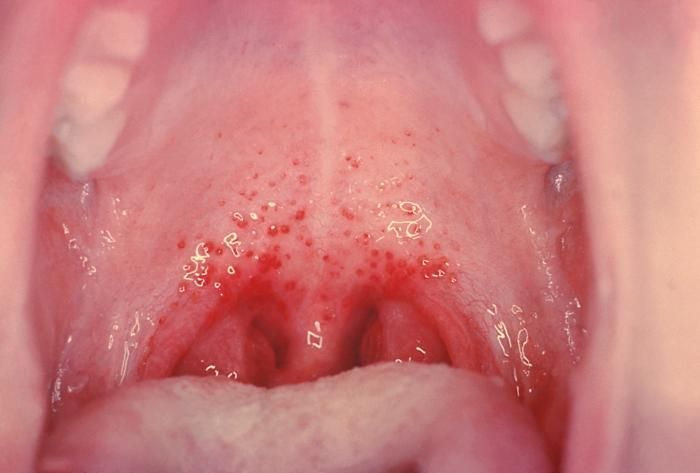This topic takes on average 45 minutes to read.
There are a number of interactive features in this resource:
 Human biology
Human biology
Bacteria are prokaryotes, so the size and makeup of their cells is different to that seen in eukaryotic cells. They are around 50 times smaller than eukaryotic cells on average, with a diameter of around 0.2- 2 µm and a length of around 0.5-10 µm. They do not have membrane-bound organelles such as the nucleus and mitochondria we see in eukaryotic cells.
Typical features of bacterial cells include:

It is important to be able to identify bacteria – it helps us identify the bacteria that keep us healthy, the bacteria that can be useful to us, and the harmful bacteria that act as pathogens. We need to be able to identify specific bacterial pathogens so we know what is causing a disease and how it can be treated.
If conditions are right, the fastest growing bacteria can reproduce once every 20 minutes. In reality this doesn’t happen because bacteria are always growing in a system that is closed in one way or another. Their growth is limited by shortages of the nutrients they need, less than optimum temperatures, and/or a build up of waste products.

Bacterial growth – in theory and in reality
Bacteria can cause the symptoms of disease in a number of ways. Some may invade and destroy the cells, however the majority of bacteria cause disease as a result of the toxins they make.
There are two main types of bacterial toxins
Bacterial diseases can be very mild – most people have suffered from tonsillitis or a septic cut at some stage of their lives. They can also be extremely dangerous and even life-threatening. Bacterial diseases such as septicaemia, pneumonia and tuberculosis still kill millions of people every year. In theory, antibiotics - drugs that can treat bacterial diseases - should have made them a problem of the past. Unfortunately we have overused these drugs, so now many bacteria are resistant to antibiotics and they are no longer effective. Also, many people do not have access to medical care and the drugs that could save their lives.

This inflammation is caused by Streptococcus bacteria.
(Photo credit: CDC/Heinz.F.Eichenwald)